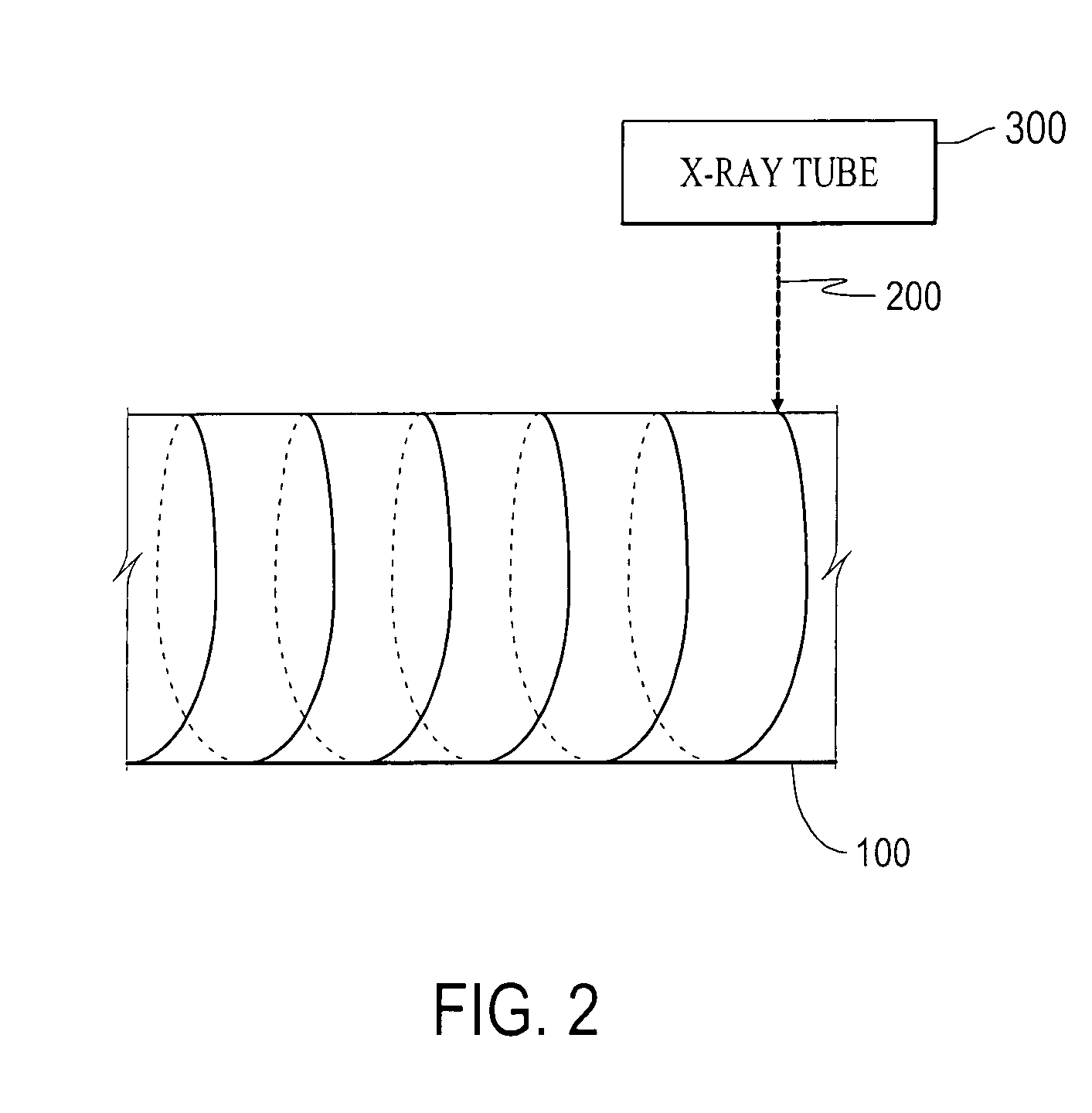Method for inspecting ceramic structures
a ceramic structure and inspection method technology, applied in material analysis using wave/particle radiation, instruments, nuclear engineering, etc., can solve the problems of affecting the filtration performance or the ability, the method is not suitable for inspecting the pore size of the filter, and the method is not suitable for inspecting the shape and size of the defect, etc., to achieve the effect of short tim
- Summary
- Abstract
- Description
- Claims
- Application Information
AI Technical Summary
Benefits of technology
Problems solved by technology
Method used
Image
Examples
examples
[0037]The present invention will now be further described in detail with reference to examples. However, the invention is not limited to the scope of the examples.
examples 1 and 2
(1) Preparation of Honeycomb Structure
[0038]Powder compositions of cordierite were compounded so that the porosities would be 50%, 60%, and 65% after firing. A binder and water were added to the compositions, and the mixtures were kneaded and plugged to prepare three pieces of clay. Then, each of the three pieces of clay was formed and dried to yield a dried honeycomb body. In this process, Example 1 used an extrusion die having rectangular cells with a cell density of 300 cells / in2, a rib thickness of 12 mills, and an open frontal area of 62.8%, and Example 2 used an extrusion die having rectangular cells with a cell density of 100 cells / in2, a rib thickness of 17 mills, and an open frontal area of 68.9%. Both ends of the dried body were cut off to form flat and smooth surfaces. The resulting body was coated with a film and provided with holes in a checkered pattern with a laser. Then, a slurry of a cordierite composition was prepared and press-fitted into the honeycomb carrier to ...
PUM
| Property | Measurement | Unit |
|---|---|---|
| tube current | aaaaa | aaaaa |
| tube voltage | aaaaa | aaaaa |
| tube current | aaaaa | aaaaa |
Abstract
Description
Claims
Application Information
 Login to View More
Login to View More - R&D
- Intellectual Property
- Life Sciences
- Materials
- Tech Scout
- Unparalleled Data Quality
- Higher Quality Content
- 60% Fewer Hallucinations
Browse by: Latest US Patents, China's latest patents, Technical Efficacy Thesaurus, Application Domain, Technology Topic, Popular Technical Reports.
© 2025 PatSnap. All rights reserved.Legal|Privacy policy|Modern Slavery Act Transparency Statement|Sitemap|About US| Contact US: help@patsnap.com



